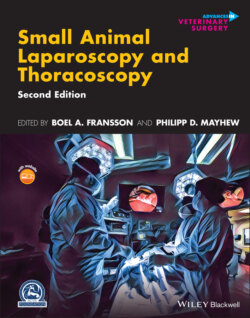Читать книгу Small Animal Laparoscopy and Thoracoscopy - Группа авторов - Страница 64
Slip Knots
ОглавлениеThe simplest of slip knots is a regular single throw advanced and cinched down with the knot pusher, but this does not withstand any tension on the suture line. A great number of more complex knots have been described for the latter purpose, and the veterinary literature has evaluated the performance of a number of these, including the 4S modified Roeder (4SMR), modified Roeder, and Weston and Brooks knots [17]. The 4SMR knot was significantly stronger than the other knots. Weston and many other slip‐knots require added throws for security. The 4SMR and Weston knots have also been compared in smaller suture size, 3‐0 polyglactin and polydioxanone (PDS). The 4SMR, a complex knot without need for added throws, performed comparable to a Weston with three additional square throws in 3‐0 PDS but tended to slip with the braided polyglactin, which was counter‐intuitive. The Weston knot performed well in both braided and monofilament suture, with the added 3 throws [18]. In our experience, the 4SMR knot is very sensitive to errors; with any air in the knot it becomes prone to slippage. We therefore prefer the use of a modified Roeder knot (Figure 2.23), similar to that described by Ragle [19].
This knot is in our opinion easier to tie and with less risk for air in the knot, than the 4SMR. When we used it tied with 2‐0 polyglactin 910 for ovary pedicle ligation in 16 dogs, it was secure without added throws (data to be published). However, the surgeon needs to ensure the knot is correctly tied and avoids air knots. We use this knot also for hand tied ligature loops, again in polyglactin 910, which greatly reduces the cost compared to commercially available loops.
